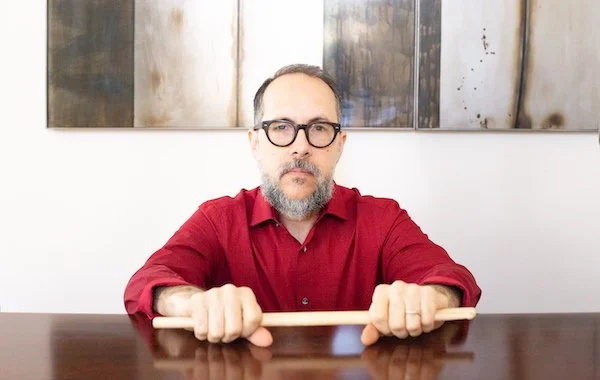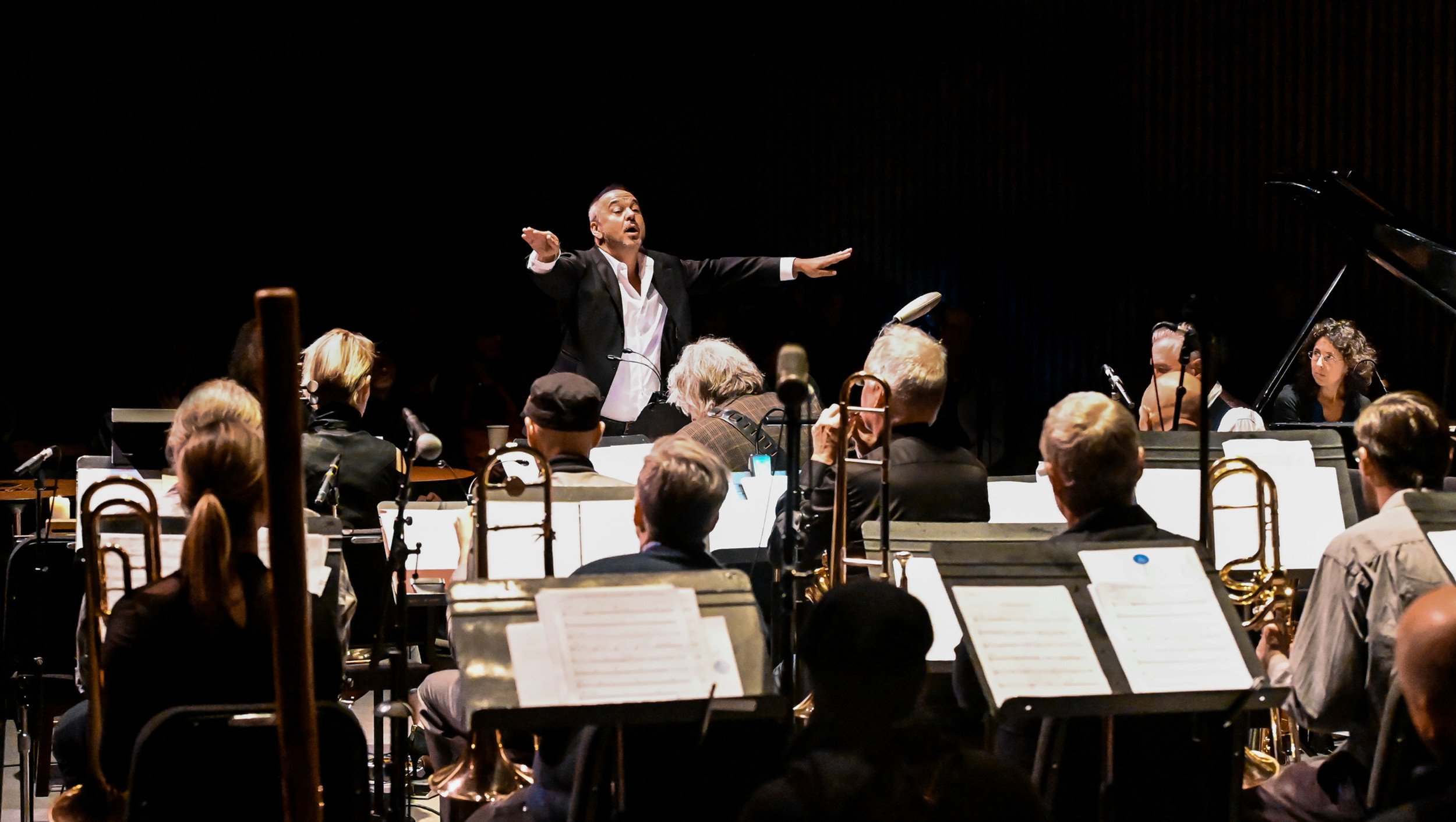Composer and percussion master John Hollenbeck works Hard Rubber Orchestra's many colours in new commission
The artist seeks out undercover assets, and draws on his own domestic life, for Three Sighs
John Hollenbeck
The Hard Rubber New Music Society and SFU Woodward’s Cultural Programs present the Hard Rubber Orchestra with John Hollenbeck at the SFU Goldcorp Centre for the Arts on May 27
WHO IS JOHN Hollenbeck’s mole?
It’s an odd question, maybe. “Spy jazz” had a moment in the sun during the Cold War ‘60s, mostly due to John Barry’s swinging scores for the James Bond movie franchise, but actual espionage has not figured prominently in the history of improvised music.
Nonetheless, when composer and percussionist Hollenbeck gets a commission for a new work, one of his first actions is to seek out undercover assets.
“I definitely listen as much as I can,” he reports, in a zoom interview from a safe house—which, in this case, is a quiet room somewhere in the bowels of McGill University, where he teaches jazz drum set, composition, improvisation, and arranging. “And then I try to find a trustworthy, honest person in the band who will tell me the absolute truth about what people do, what they like to do, and what they don’t like to do. Does someone doubles on a certain instrument? Do they like to improvise? If they do like to improvise, is there a certain way that they like to improvise, or a certain way that they don’t like to improvise? Do they absolutely need to improvise, which some people do, or are they actually totally okay if they don’t? Some people just like being in the band and maybe are not super-comfortable improvising, so they don’t really care.
“That information really helps,” he adds. “It gives me an overview of what I can do and where I could go.”
Our own agents in the field have not successfully identified Hollenbeck’s operative within Vancouver’s Hard Rubber Orchestra, although there’s a reasonable possibility that his informant is bandleader John Korsrud—who, after all, is responsible for inviting him to compose a new work for the HRO, which Hollenbeck will also join on drums next weekend.
Between his work with Hard Rubber, that band’s Latin-focused offshoot Orquesta Goma Dura, and his electro-psychedelic Absolute Unit, Korsrud is well placed to assess the local jazz scene.
In the offhand chance that Korsrud isn’t talking, though, there are a few things Hollenbeck might find useful to know. The first is that although Hard Rubber is hard to characterize as either a jazzy big band or a new-music chamber orchestra, which side of the border it occupies usually depends on who’s writing the charts. With Hollenbeck himself a master of blurring musical boundaries, we can expect sounds that are fluid, detailed, cinematically expansive, and perhaps rather amorphously constituted, at least in terms of genre. (There may be occasional references to minimalism. Hollenbeck has enjoyed a long collaboration with New York City avant-gardist Meredith Monk, a contemporary of Steve Reich and Philip Glass, while Korsrud studied with the late Dutch master of looping forms, Louis Andriessen.)
Next to consider is Hard Rubber’s current lineup, which is at least superficially similar to the kind of big band Duke Ellington or Charles Mingus might have led, but with a few twists. There can be classically trained strings; cellist Marina Hasselberg and violinist Mark Ferris are frequent contributors. Guitarist Ron Samworth can pivot from sophisticated chording to amped-up distortion, as he’s recently shown in HRO’s lively King Crimson tribute shows. And one of the band’s newest recruits, Shruti Ramani, is as skilled at traditional North Indian singing as she is at free improvisation. (Her all-star Raggaverse band will also open the show.)
This is obviously a band that offers a lot to work with, but at the same time it’s not far off Hollenbeck’s own 19-piece Large Ensemble, a similarly glittering collection of New York luminaries. Consequently he’s revamping a few of his Large Ensemble scores to fit the HRO players, but that’s not a major undertaking—unlike the new commission, Three Sighs, the third in a series of works inspired by… Well, inspired by domestic life, and especially, one imagines, by domestic life during the pandemic years.
“I’m incredibly sensitive to my wife’s sighs,” Hollenbeck reveals. “Every time she sighs I’m like ‘Oh, no! What’s wrong now?’ And it could just be, like, nothing at all. But I just got interested in that as a sound, and that became the core sound in this series of pieces.
John Korsrud’s Hard Rubber Orchestra.
“The first one is called Sighs, and the core material is the same: a line that the piano plays. In the first piece, the piano starts at the very, very top of the piano and the piece then goes to the very, very bottom of the piano. And when that’s within the range of an instrument, that instrument also plays with the piano, and in the beginning and in the end the band vocalizes.
“The second piece is called Owt Shgis, which is Two Sighs, but backwards,” he continues. “And it’s the whole first piece, backwards, essentially. That was the premise, but then of course it was a lot more work! I couldn’t just turn it around.”
“In general,” he adds, “I try to use a different process for every piece, and I’ll also use a different tool-sequence, with ‘tool’ meaning drums, piano, paper, computer, things like that. With some people if you say ‘How do you write music?’ they’ll say ‘I go to the piano.” Ask somebody else and they’ll say ‘Well, of course I go to the drum machine first and I write a beat and rap over that.’ People have the same process, but I try to have a different process for every piece. So the thing that I did differently in this one, the big difference, is that this time I took the original line and made it kind of vertical. And after I had that down on paper, then I went to the piano to see what it sounded like that way. There’s more harmony, let’s say, in this piece than in the other ones.”
There will be sighing, too—but only from the stage, or so our sources promise.















